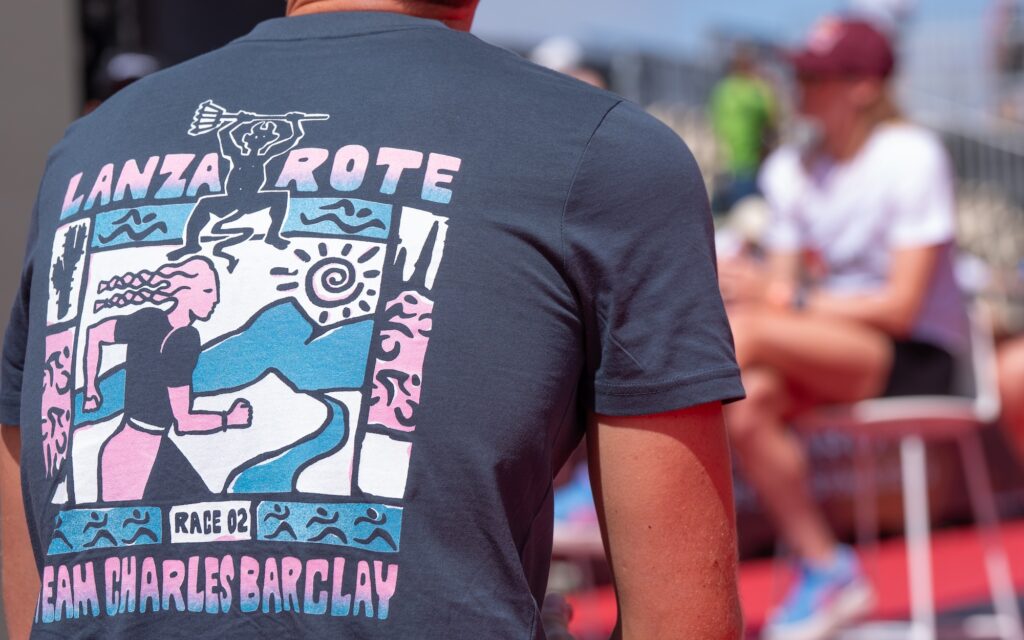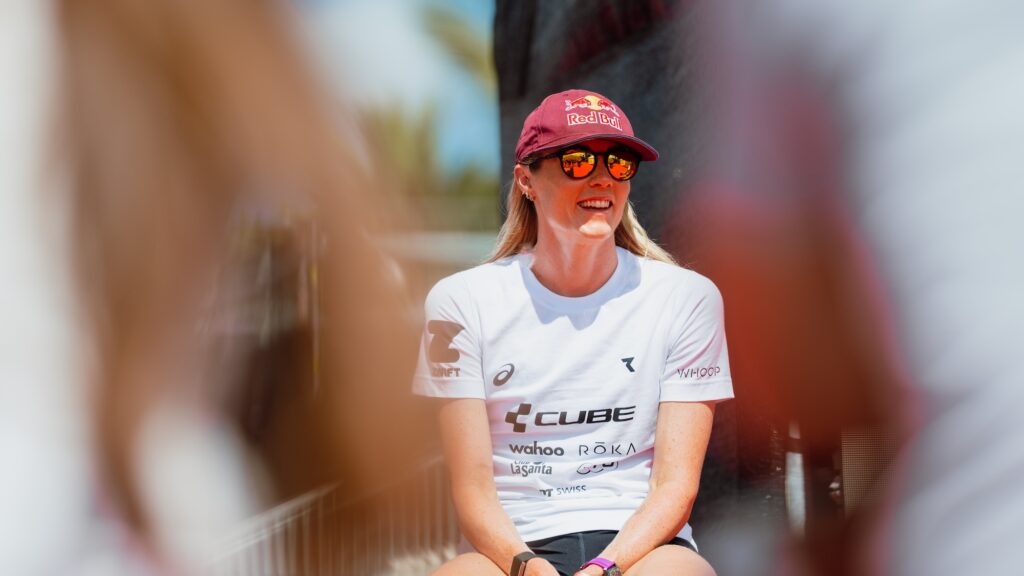Originally published at: Never Too Many Cooks: How Pro Triathletes Have Transitioned From One Coach Each to Full Support Teams - Slowtwitch News

It takes a village. Reece Barclay at the press conference at IRONMAN Lanzarote. Photo: Club La Santa/ by_wout.photographer
Triathlon is an individual pursuit on race day, but just like any other sport, athletes of all levels have coaches. It used to be quite standard for an athlete to have a single coach who could work with them on all three disciplines of triathlon, but that is changing among the pros. It is becoming more and more common for top professionals (AKA the professionals who can afford this) to work with multiple coaches for the different areas of the sport. Triathlon remains an individual sport, but the teams behind the scenes for many pros are only getting bigger.
Jacks of All Trades
Triathlon has been around for 50 or so years and, until recently, it was a sport that didn’t get people started in endurance pursuits. Instead, triathlon has been a sport that athletes find from other sports. Swimmers, cyclists and runners who wanted to branch out or find new challenges turned to triathlon and quickly fell in love with the sport. Even most endurance sport rookies have some sort of background (even if it’s minimal) in one of the three disciplines of triathlon before signing up for their first race.
Today, however, triathlon is established enough as its own sport to welcome true first-time endurance athletes. There are people entering the sport who are triathletes first, not individual-sport athletes who found their way to triathlon. Considering the fact that this is a recent development in the sport, it only makes sense that many of the coaches in the world of triathlon discovered the sport via one of its three disciplines.
This is by no means a bad thing — there are countless triathletes and triathlon coaches who are experts in all three sports — but ask yourself this: would you rather be coached by a pure swimmer in the pool or someone who is equally good at swimming, cycling, and running? Would you rather have a run coach who lives on the track, or a triathlon coach who found his or her way to the sport via cycling? It only makes sense for an athlete to hire multiple coaches for the multiple disciplines rather than one coach for all three (if they have the financial resources to do so).
Training With a Team
Only the best of the best triathletes can afford to hire multiple coaches. Taylor Knibb has a full entourage when it comes to coaches. Her main coach is Dan Lorang, who heads the Bora-Hansgrohe pro cycling team. Lorang used to coach Jan Frodeno, and he currently works with a pair of Knibb’s biggest competitors in IRONMAN, Lucy Charles-Barclay and Anne Haug.
In addition to Lorang’s overall coaching, Knibb works with a run technique coach, a swim coach (four-time triathlon world champion Julie Dibens holds this title on Knibb’s team), a strength coach, and a movement coach. She also has a nutritionist on her team. With so much specificity in multiple areas of her training, it is no wonder that Knibb can consistently lay down remarkable results race after race against the rest of the world’s top triathletes.

Lucy Charles-Barclay. Photo: Club La Santa/ Signe Ungermand
As already mentioned, Charles-Barclay also works with Lorang, but he is not her only coach. Lorang handles Charles-Barclay’s overall program and race planning, but her husband, Reece Barclay, takes care of the day-to-day training. In addition to this coaching staff, Charles-Barclay works with a manager and a media coordinator. Although these are not directly related to Charles-Barclay’s triathlon performance, they’re jobs that she can afford to hand off and not worry about, allowing herself to give training her undivided attention.
Kiwi star Hayden Wilde is currently recovering from multiple injuries he suffered after a bike crash. He doesn’t always have a huge team surrounding him (although he does tend to work with a main coach and a swimming coach), but he is working on his comeback at the Red Bull Athlete Performance Centre in Austria. There, he has access to a full team of specialists, from physiotherapists to coaches and more. This is, of course, quite a privileged position for an athlete to be in, but adding more people to one’s team looks to be a growing trend for professional triathletes.
Why the Change?
There is a simple reason behind this change in coaching standards among professional triathletes: money. For the first time in the sport’s history, triathletes have the potential to earn a decent pay cheque, both on the race course and off it.
Sure, the winner in Kona has gotten a hefty sum for a while now, and there have been a few races with big prize purses over the years, but with the boom in the sport and so many new races and organizations forming, there is suddenly a lot of money to be earned by professional triathletes. With so much money coming into the sport, this is the first time that triathletes can afford to hire multiple coaches.
There is still a large disparity in wealth between the top triathletes in the world and athletes ranked in the hundreds in the PTO standings, but that can be said of any individual sport. In tennis, the top 50 players are pretty much set financially with regular tournament appearances and brand deals, but someone ranked 320th in the world is going to have to train and live a little less extravagantly.
It’s the same in triathlon right now. The winners of the biggest races in the world aren’t earning as much as tennis’s Novak Djokovic at Wimbledon, but they are making far more than just a liveable wage, and so they can afford to re-invest that money into their training with the best coaches, nutritionists and team. And just like in any other sport, new talent will find a way to the top, even if they don’t have access to the best support just yet, although through their success, they will eventually be able to surround themselves with experts.
This trend of hiring multiple coaches for a single athlete is only going to help the sport. It will give the best triathletes every chance to get even better, paving the way for more record-breaking performances, fast times, and thrilling races. All of this will add up to bringing more attention to triathlon, which means more money for more athletes, creating even more opportunities rather than just a few at the very top. We very well may be entering the golden age of triathlon, and it is going to be an extremely exciting time for everyone involved.